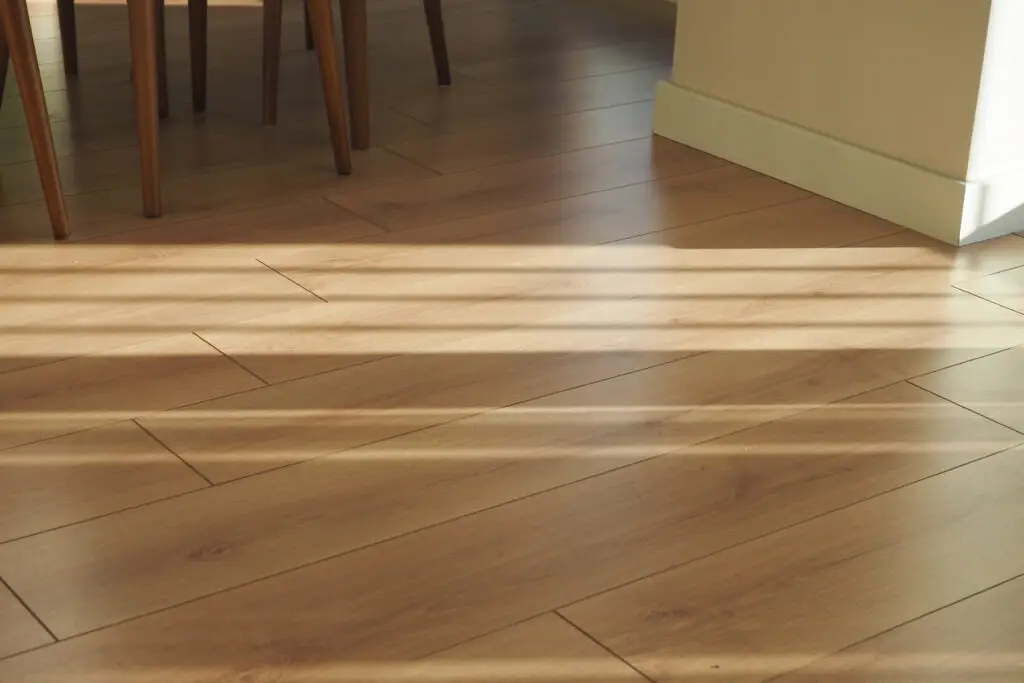Hardwood floors are a timeless investment that add unparalleled beauty, warmth, and value to any home. Unlike other flooring options that may need frequent replacement, hardwood is renowned for its exceptional durability and longevity. Many homeowners wonder, “How long do hardwood floors truly last?” The answer, while varying, often spans decades, if not generations, largely depending on a combination of factors including the type of wood, how it’s used, and the level of care it receives.

Factors that affect hardwood floor lifespan
The lifespan of your hardwood floors is not set in stone; it’s a dynamic outcome influenced by several key elements. Understanding these factors can help you maximize your floor’s durability and beauty.
Wood species and quality
The inherent characteristics of the wood itself play a significant role in how long your floors will last.
- Hardness (Janka Scale): Wood species are rated on the Janka hardness scale, which measures their resistance to denting and wear. Harder woods, like Oak, Maple, and Hickory, naturally withstand more impact and last longer than softer woods, such as Pine or Fir. For instance, Red Oak, a popular choice, has a Janka rating of around 1290, while Brazilian Cherry boasts over 2300.
- Solid vs. Engineered Hardwood:
- Solid Hardwood: Composed of a single piece of wood, typically 3/4 inch thick. These floors can be refinished multiple times (often 4-6 times or more throughout their life), allowing them to last for 75-100 years or even longer.
- Engineered Hardwood: Made of multiple layers, with a top layer (veneer) of real hardwood. The thickness of this top veneer dictates how many times the floor can be refinished. Thicker veneers (e.g., 3-6mm) allow for 2-3 refinishes, giving them a lifespan of 30-80 years. Thinner veneers (less than 2mm) may only allow for one or no refinish, shortening their lifespan.
- Quality of Finish: The factory or on-site applied finish (e.g., polyurethane, aluminum oxide) protects the wood itself. High-quality finishes offer better resistance to scratches, scuffs, and moisture, extending the period before refinishing is needed.
Foot traffic and usage
The amount and type of activity your floors endure directly impact their wear and tear.
- High-Traffic Areas: Hallways, kitchens, and entryways experience constant foot traffic, making them more prone to scratches, scuffs, and finish wear. These areas will show signs of aging faster than bedrooms or formal living rooms.
- Pets and Children: Pets with untrimmed nails can cause significant scratches, while toys and active play can lead to dents and abrasions. While hardwood is durable, consistent heavy impact will show over time.
- Furniture Movement: Dragging furniture without proper felt pads can leave deep scratches and gouges.
- Shoes vs. No-Shoes Policy: Outdoor shoes track in dirt, grit, and moisture, which act like sandpaper on the finish. A “no-shoes indoors” policy can significantly reduce wear.
Maintenance and cleaning habits
Consistent and proper care is crucial for preserving your hardwood floors.
- Regular Cleaning: Daily or weekly sweeping, dust mopping, or vacuuming (with a hard floor attachment) removes abrasive grit, preventing micro-scratches that dull the finish.
- Proper Cleaning Methods: Using hardwood-specific, pH-neutral cleaners and a barely damp mop prevents streaking, residue buildup, and most importantly, water damage.
- Avoiding Damaging Practices: Excessive water, harsh chemical cleaners (like ammonia or bleach), steam mops, and abrasive cleaning tools (like steel wool) can damage the finish, cause water damage, or even discolor the wood.
Signs it’s time to replace or refinish
Hardwood floors don’t typically “expire” suddenly. Instead, they give clear signals that they need attention. Recognizing these signs helps you decide whether a refresh is enough or if a full replacement is due.
- When to Refinish (Typically Every 7-15 Years, or as Needed):
- Dullness and Lack of Luster: The finish looks cloudy or lifeless even after cleaning. This indicates the protective layer is worn down.
- Surface Scratches and Scuffs: Visible scratches and scuffs are present, but they are only in the finish, not deep into the wood itself.
- Discoloration from Sun Exposure: Areas exposed to direct sunlight may appear faded or discolored compared to shaded areas. Refinishing can restore color uniformity.
- Minor Water Spots: Small, localized water spots that haven’t deeply penetrated or warped the wood.
- “Buff and Coat” Option: If only the top layer of the finish is dull or lightly scuffed, a simpler “buff and coat” (where the existing finish is lightly abraded and a new top coat applied) might be sufficient, extending the time until a full refinish.
- When to Replace (After Multiple Refinishes, or Severe Damage):
- Deep Gouges and Dents: Scratches and dents are so deep that they penetrate significantly into the wood, making them impossible to sand out without compromising the integrity of the board.
- Extensive Water Damage: Signs include severe cupping (edges higher than the center), crowning (center higher than the edges), buckling (boards lifting off the subfloor), widespread dark water stains, or visible mold/mildew. This often indicates moisture penetration that has damaged the wood beyond repair.
- Widespread Gapping or Separation: Excessive gapping between boards that cannot be corrected by humidity control, or boards that are significantly separated or loose.
- Structural Issues: If the floor is squeaking excessively, sagging, or showing signs of rot, it might indicate subfloor or structural problems that necessitate removing the hardwood to address the issue underneath.
- Too Many Refinishes: For solid hardwood, if the tongue-and-groove has been sanded down too many times, there won’t be enough thickness left for another refinish. For engineered hardwood, if the veneer is too thin to sand again. You’ll know it’s too thin if you start seeing the plywood core after sanding.
How to extend the life of your hardwood floors
While hardwood floors are incredibly resilient, their impressive lifespan is often a result of diligent care and proactive protection. By adopting a few simple habits, you can significantly extend the life and beauty of your investment.
- Establish a Regular Cleaning Routine:
- Daily/Every Other Day: Sweep or dust mop high-traffic areas (entryways, kitchens, hallways) with a microfiber dust mop to remove abrasive grit, pet hair, and dust.
- Weekly: Vacuum with a hard floor attachment (never a beater bar) or continue dust mopping all hardwood surfaces.
- Bi-Weekly/Monthly (Damp Mop): Use a barely damp mop with a pH-neutral, hardwood-specific cleaner. Ensure the mop is well-wrung out – standing water is the enemy of hardwood.
- Protect Against Scratches and Dents:
- Furniture Pads: Apply felt pads to the legs of all furniture (chairs, tables, sofas, cabinets) and regularly check/replace them.
- Area Rugs: Place area rugs in high-traffic zones (entryways, in front of sinks, under dining tables) to provide an extra layer of protection. Ensure they have non-slip backings that are safe for hardwood.
- Trim Pet Nails: Keep your pets’ nails regularly trimmed to minimize scratches.
- Consider a “No Shoes Inside” Policy: Outdoor shoes track in dirt, grit, and moisture that can dull and scratch the finish over time.
- Manage Humidity Levels:
- Wood expands and contracts with changes in humidity. Use a humidifier in dry winter months and a dehumidifier in humid summer months to maintain a stable indoor humidity level (ideally between 35-55%). This prevents gapping, cupping, and crowning.
- Clean Spills Immediately: Wipe up any spills, especially water, pet accidents, or acidic liquids, as soon as they occur. Standing moisture can penetrate the finish and lead to water stains or even warping.
- Protect from Sunlight: Prolonged exposure to direct sunlight can cause wood floors to fade or change color unevenly. Use curtains, blinds, or UV-filtering window films on windows facing direct sunlight.
- Professional Refinishing: Don’t wait until the finish is completely gone to refinish. When you start to see noticeable dullness, surface scratches, or signs of wear, it’s often time for a professional refinish (typically every 7-15 years, depending on traffic). This removes the worn top layer and applies a fresh new finish, significantly extending the life of your floors.
With proper care and timely intervention, your hardwood floors can be a lasting legacy in your home, providing beauty and comfort for generations.
Ready to enhance the lifespan and beauty of your hardwood floors? Sky Hardwood Floors specializes in expert hardwood floor installation, refinishing, and maintenance, ensuring your floors look stunning and last for decades. Contact us today for a free consultation and let us help preserve your investment!
